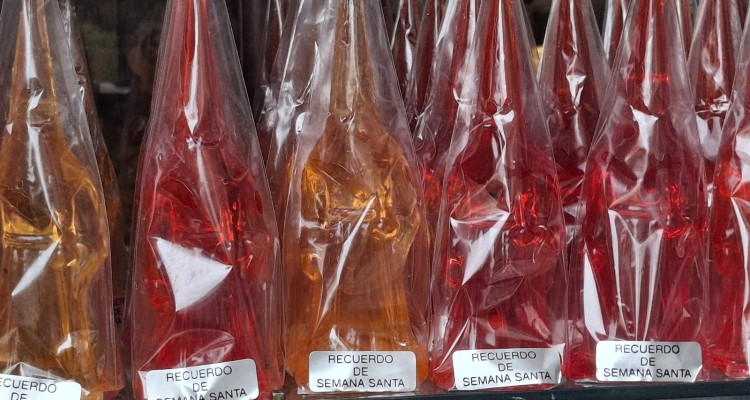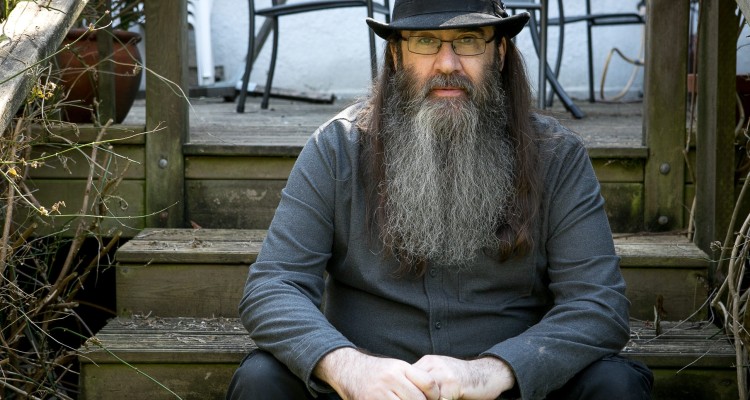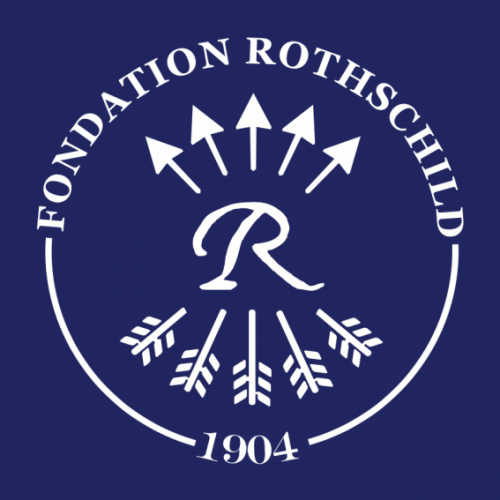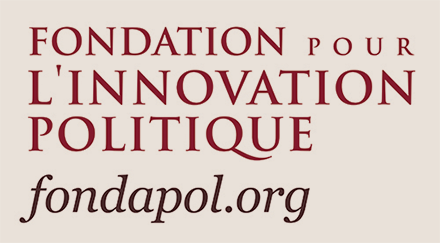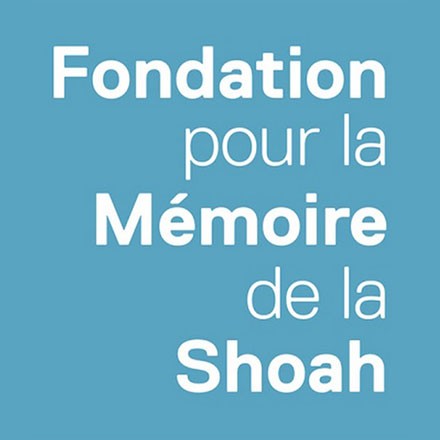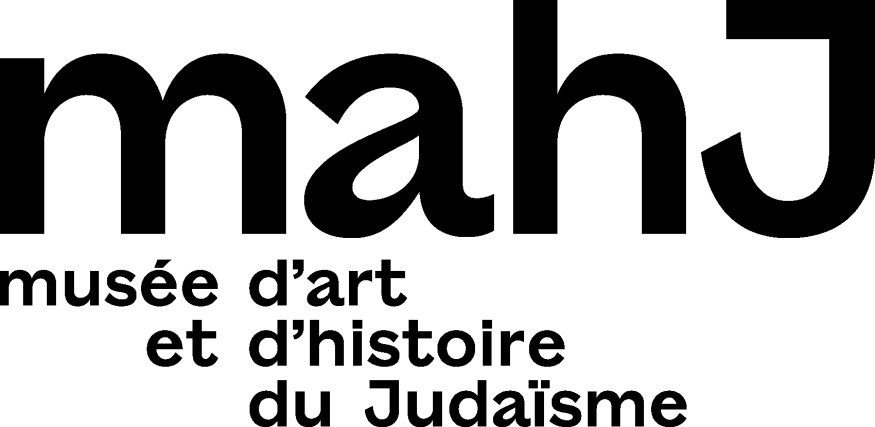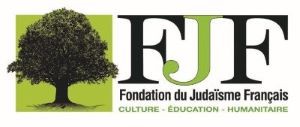Exhibition: “Joann Sfar. Drawn life”, from October 12, 2023 to May 12, 2024 at the mahJ
Paying tribute to Joann Sfar’s comic strip The Rabbi’s Cat (Le Chat du Rabbin), Ewa Tartakowsky takes the opportunity to question certain “Ashkenazi-centric” prejudices. Isn’t there a tendency to relate to Maghrebian Jewishness while ignoring its specificities, thereby retaining something of the colonial legacy? In this respect, Sfar’s work, driven by the caustic lucidity of The Cat, is a valuable remedy for appreciating the subtleties of a mixed European Judaism.
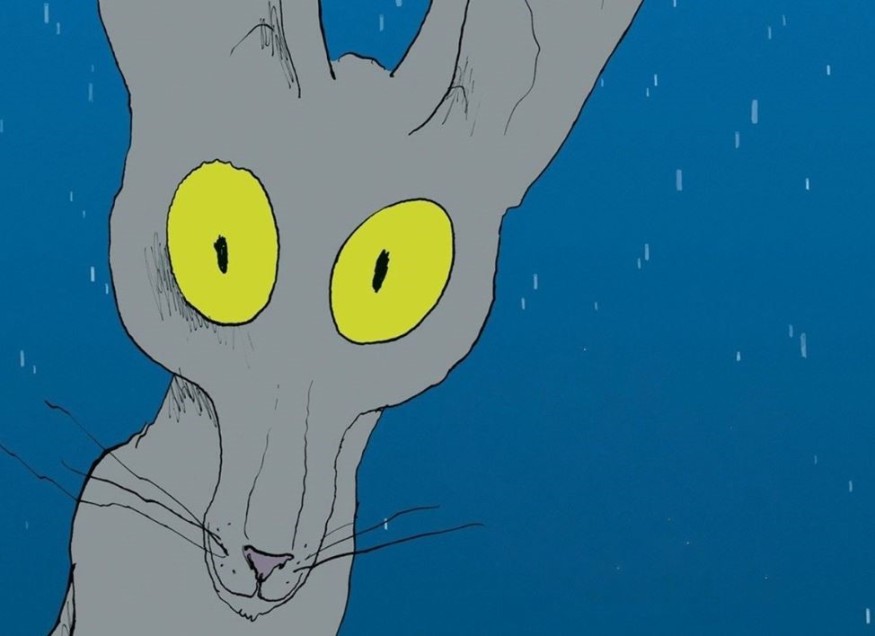
It was in 2002, the year of the first edition of the first volume of Le Chat du rabbin (The Rabbi’s Cat), that I discovered this mischievous cat and his burlesque dialogue with his rabbi. At the time, I was studying Jewish studies at the Jagiellonian University in Krakow. My course included Hebrew and Yiddish, biblical and contemporary literature in Yiddish, the history of the Jews of Poland and Eastern Europe, and the history of Jews throughout the world. However, this world history is limited to that of the Jews of ancient Palestine, medieval, modern and contemporary continental Europe, and finally Israel. North African Jews, as well as Iranians, Iraqis, Egyptians, Libyans and ‘others’, are resolutely absent. The only Sephardim mentioned are those expelled from Spain and Portugal, including a small group who, on the initiative of a wealthy Polish aristocrat, Zamoyski, founded a Sephardic community in Zamość[1]. So I knew nothing about the world of North African Jews, but Sfar’s comic strip made me laugh out loud: the dialectical spirit of the hairy creature resonated well with the biblical texts, the Talmud and certain elements of Jewish mysticism that I was studying at the time. As far as I was concerned, the rabbi was Jewish (which was right) and therefore Ashkenazi (which was not entirely the case) or, to put it another way, he was necessarily Ashkenazi because he was Jewish.
Many years later, when I was already living in Paris and working on my doctoral thesis on the sociology of the literature of North African Jews in France[2], I realized that I hadn’t understood anything in The Rabbi’s Cat. Its story does not ‘simply’ take place in a Jewish world: it tells the story of Maghrebi Jewishness.
For the Voltairean cat, atheist and in love with his mistress Zlabya, the rabbi’s daughter, lives in an Algiers that doesn’t always say its name, but which reveals itself through its buildings and monuments: from the very first pages of the book, you can make out the great synagogue of Algiers, the Jamaa al-Jdid fishing mosque, the Place Randon and the statue of the Duke of Orleans. It’s a Jewish world with North African references, drawn and told with a tenderness that’s often tinged with irony. Zlabya, whose name evokes an Algerian pastry sweetened with cardamom, loves – if the score on her piano is anything to go by – the tunes of Lili Labassi, the interpreter and musician of Andalusian songs. The rabbi invites guests to help themselves to “berbouche“, a dish made from thick-grain semolina or crumbled bread. It is not unusual for him to speak in several Maghreb languages, as when he meets his cousin the Malka, when he “throws himself into his cousin’s arms and says blessings in Arabic, Ladino and Pataouète”[3]. The Malka also prays “In Aramaic. In Ladino. In Judeo-Arabic, in Kabyle. In Hebrew. In Spanish […]. He sings in Arabic”[4]. Neither stuffed carp nor Yiddish are on the table, nor is the game of Eastern European imperial domination in which the “polar Jews”[5], to use Sfar’s expression, evolve as best they can.
His graphic narrative, meanwhile, reveals other forms of domination. It depicts the social reality of a colonial universe that immediately compartmentalizes and determines social groups and communities. Inherited from the pre-colonial period, ethno-religious identifications are fully operational. Indeed, before French domination, Jews were dhimmi, an Arabic term referring to the special, dominated status of Jews and Christians in Islamic countries. Historian Charles-André Julien underlines “the contempt in which they were held by all other groups and the avanities of which they were constantly the victims, which led them to a resignation that had no other compensation than trust in God and the hope of better days”[6].
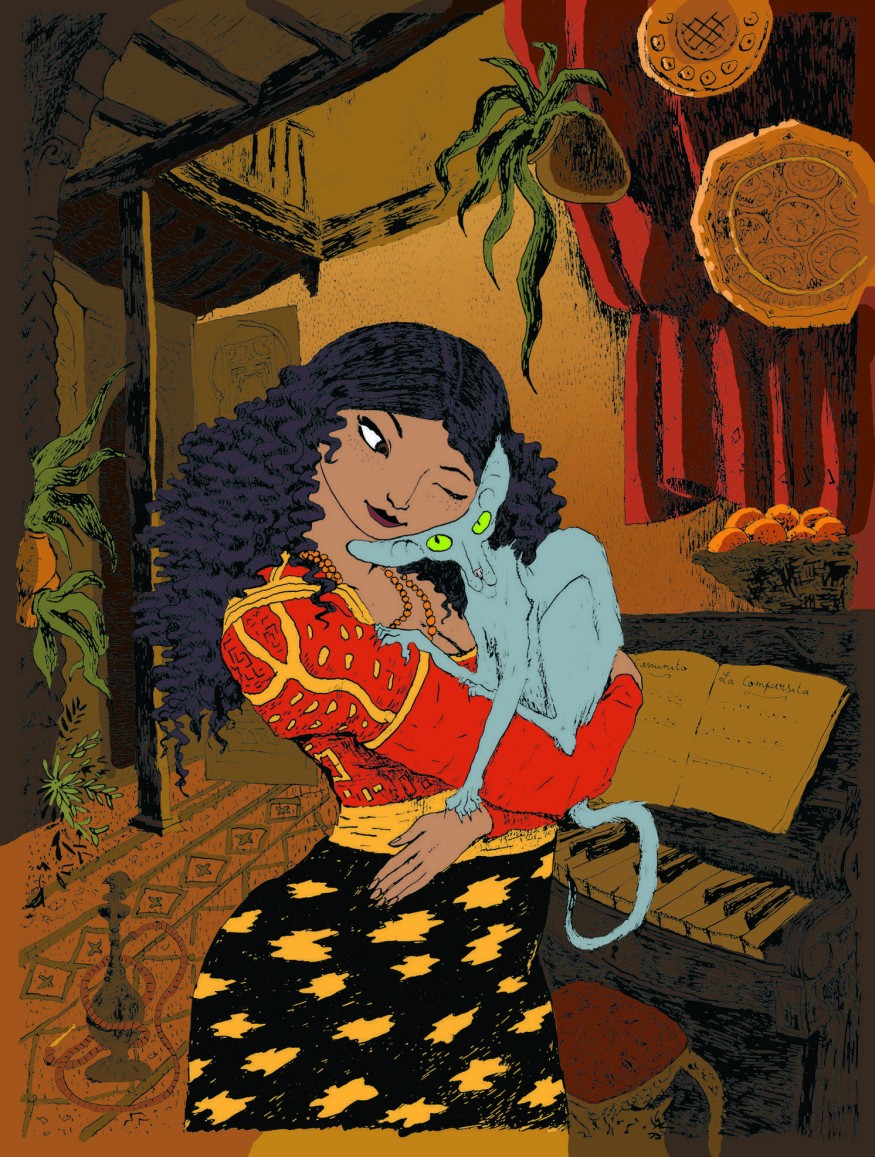
Sfar’s comic strip echoes this with the rabbi’s comment: “I’m talking about a time when the Jews of Algeria were not yet French. Over there, there were the French, the Arabs and the Berbers, and us right underneath. Well, even among us, we were the least considered in Algeria.[7]” Jews didn’t live in the same neighborhoods as Muslims. Hence the cat’s astonishment when one of the rabbi’s disciples ventures into the Arab quarter: “What’s he doing there? Does he want us to find his head on a stick or what!”[8]. A little Berber boy, listening to the Malka’s stories, exclaims: “But even so, we don’t like Jews”[9], and Muslim Soliman considers that “the [Jewish] prayers don’t go far. If you want to please me, embrace the faith of the Prophet Mohammed”[10]. The dispute over a planned Muslim prayer at the synagogue, following the flooding of the mosque, even led to a street demonstration: “Everyone must stay at home”[11]; “Everyone at their home and let’s cultivate our differences”[12].
These animosities obviously resonate with what I know about Central and Eastern Europe, even if there, in that other East, coexistence sometimes takes more violent forms. For a time, Jews there were protected by princes and kings, but things took a turn for the worse from the 18th century onwards: discrimination, multiple prohibitions and violence culminating in pogroms punctuated the history of Eastern European Jews.
In Algeria, the discrimination suffered by Jews was used as one of the arguments to justify their “regeneration” project. This program was promoted by metropolitan Jews for their Algerian co-religionists. Following a study trip to Algeria, Jacques-Isaac Altaras and Joseph Cohen wrote a report arguing in favor of granting French nationality to the Jews of Algeria: “[…] the Israelite element seems destined in these various respects to serve as a point of contact between the French and the former dominators of the soil, [. …] among them there is an admirable ability to assimilate the principles of civilization brought to them, an intelligence which, aroused by persecution and by the difficulties of maintaining itself under the iron yoke of the Arabs, has almost always taken on a marvellous development […]”[13]. The project culminated in 1870 with the Crémieux decree, which granted French citizenship to Algerian Jews as a group.
The process of Frenchization, engendered by the political emancipation process and supported by the French Israelite authorities, runs through all of Sfar’s series, starting with Zlabya, who is discovered in the very first volume reading Stendhal’s Le rouge et le noir [14], and whose “oriental” shoes next to her metropolitan[15] Jewish husband’s “occidental” ones signal the assimilation process at work.
For Sfar, this process of acculturation feeds a scathing critique of Western and colonial ethnocentrism. As the cat explains, “Western thought is a prehensile, predatory and, in the final analysis, destructive machine, my master explains to me. It puts names to things, labels them, as if to say ‘These things are part of my system, I’ve understood them'”[16].
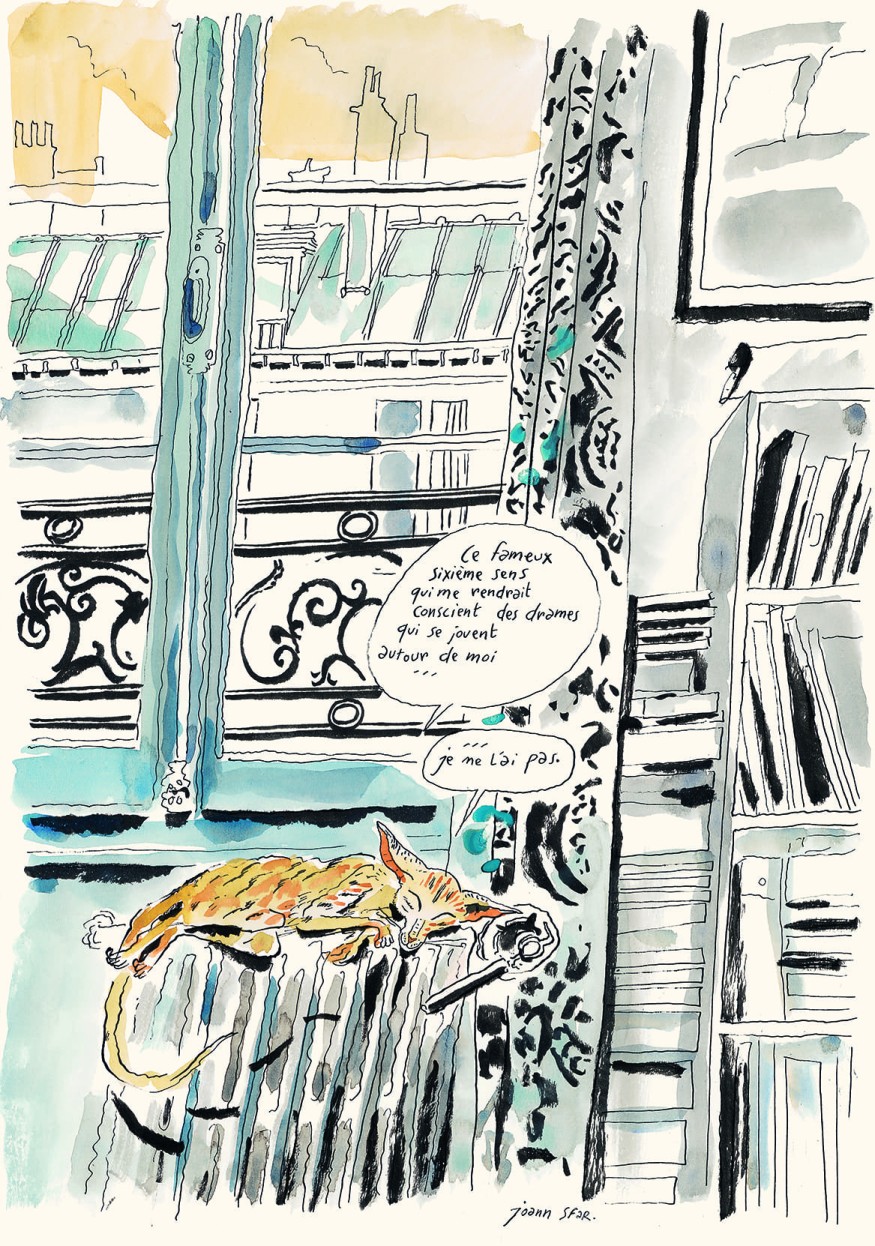
This criticism applies not only to French colonial power, but also to the efforts of the Central Consistory in its “regeneration” project[17]. The desire to order the world, to submit it to the order of a Western vertical rationalism, becomes apparent when the rabbi has to pass a dictation in order to become “an official rabbi”. The test is all the more infantilizing because it takes place in a school classroom. The cat gives a lucid and cruelly pertinent analysis: “You’ve been a rabbi here for thirty years, and those people [French Jews from the Consistoire] who have never set foot in our house want to say who’s a rabbi and who isn’t. And to say the prayer in Hebrew, you have to be a rabbi. And if you want to say the prayer in Hebrew to Jews who speak Arabic, they want you to write it in French, so as far as I’m concerned, they’re crazy…”[18].
In fact, the imposition of new standards is not self-evident. As historian Valérie Assan points out, “Rejection quickly dominated. […] This phenomenon was reinforced by the cultural gap between the faithful in Algeria and these rabbis, most of whom were European and Ashkenazi. What’s more, they are all the more unwelcome in that they compete with and even dethrone the local rabbis.[19]” In the comic strip, members of the synagogue discuss these Ashkenazi Jews with their strange morals, “much stricter than us, it seems: they read the Torah in German, can you believe it?”[20]. Sfar’s rabbi fears the arrival of “an all-white rabbi without a beard […] [who] will take my place with his lace-up shoes. [Instead of ‘A’, he’ll say ‘O’, and he won’t know our songs”[21]. The discovery of Paris during Zlabya and Jules’ honeymoon gives her the opportunity to confront this other world, that of metropolitan Jews who “pray seriously”[22] or… not at all. This is particularly true of Jules’ family, whom the cat describes as “Jews so elegant they look like Frenchmen”[23].
As the rabbi’s rabbi sums up, “in Algeria, where we were turned into Frenchmen, the spectre of assimilation loomed large. […] Assimilation is when you start living like everyone else”[24]. The issue of assimilation is no stranger to Eastern Europe either: it has been driven by political movements, both Jewish and non-Jewish, in the hope of putting an end to discrimination.
In Algeria, as in Europe, social reality is not exempt from racism and antisemitism. We discover this when “a waiter […] points out that the establishment serves neither Arabs nor Jews”[25]. For, despite the Crémieux decree, Jews did indeed constitute a distinct category of French citizens, as evidenced by population census questionnaires that included specific questions on the decree[26]. On a daily basis, Jews were subjected to numerous humiliations. Sfar echoes this when the mother of the rabbi’s rabbi, under the hilarious gaze of the store assistants in a “French” boutique, literally struggles to put on a dress on the day the Crémieux decree is declared, “because I’m French and a French woman [she says] can’t dress like that anymore”[27].
Benjamin Stora speaks of this Westernization engendered by the Crémieux decree as an exile: a rupture “that separated them [the Jews] from the other ‘natives’, the Muslims”[28]. In fact, France organized the world of North African Jews not only in relation to metropolitan France, but also to Muslims. With the Crémieux decree,” sighs the rabbi, “it said to the Jews: from now on, you’re French. And she said to the Arabs: you’re not”[29].
The mother of the rabbi’s rabbi puts it in more down-to-earth terms: “It’s hit us hard. Yesterday, we were normal, we were saying our prayers; my husband even went to have tea with the Arabs on the third floor, which was normal. And this morning, in the paper, it says we’re French! […] In the building, that’s going to cause a lot of trouble. The Italians on the second floor are French, so to speak, because they’re Catholics, and that’s normal. But if we, on the second floor, become French too, what are the Arabs on the third floor going to say? I used to take the mail upstairs. They paid me for small hosiery jobs. Even when their sink was clogged, my husband would fix it. He was a rabbi, but he helped out around the neighborhood. […] A Frenchman can’t do the dirty work. […] Can’t we take steps to make the Arabs on the third floor French? For the harmony of the union council?”[30].
In fact, the collective naturalization of Algerian Jews stigmatizes them in the eyes of Muslims as traitors and accomplices of the colonists. Sfar traces this in his account of the anti-Jewish riots in Constantine in 1934, incited by antisemitism propaganda, which involved part of the Muslim population and remained in the community’s collective memory for a long time[31]: “They were after the French, but as the French were too strong, they landed in the Jewish quarter with pikes and rifles”[32]. The European presence objectively put an end to a relatively harmonious coexistence of communities, at least less violent, compared to Eastern European communities whose history is punctuated by bloody tragedies.
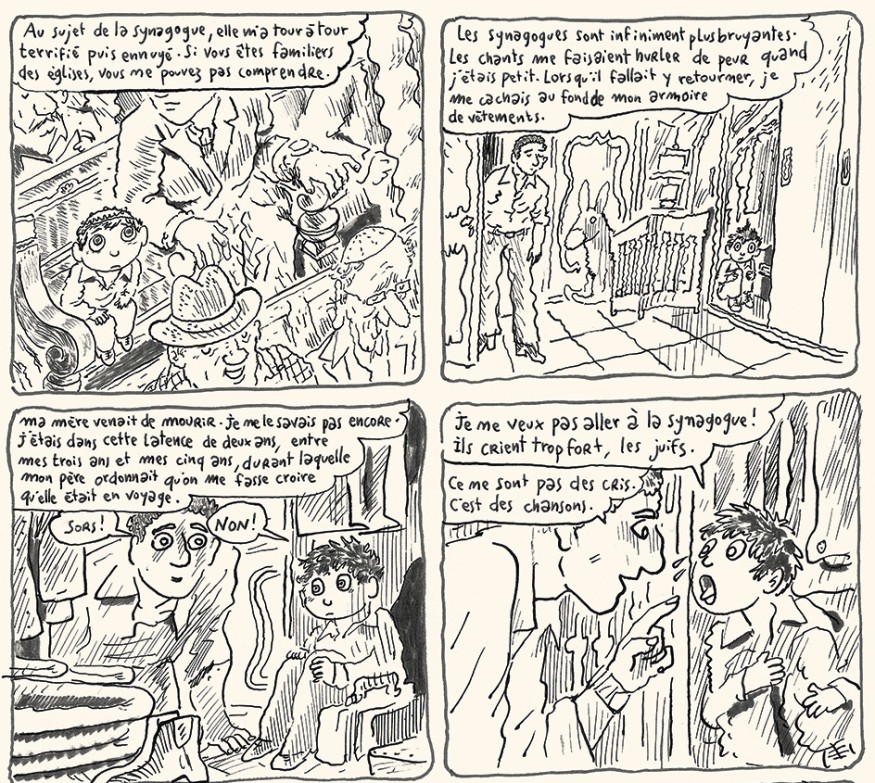
As if to designate a field of possibilities for a desirable “Algerian future”, Sfar, in a gesture of self-mockery, provokes encounters, a symbiosis, notably embodied by the relationship between Rabbi Abraham Sfar, owner of the philosopher cat, and Sheik Mohammed Sfar, accompanied by his donkey. During a pilgrimage to the tomb of their ancestor Messaoud Sfar, donkey and cat debate the origin of this common name: “No, SFAR comes from ‘sofer’. It means ‘to write’ in Hebrew. SFAR is Jewish,” says the cat. “Bourricot. SFAR comes from ‘yellow’ in Arabic. It evokes the flower of sulfur used by boilermakers. SFAR is Arabic,” retorts the donkey[33]. The human protagonists remain indifferent to this dispute: “They prayed. Both of them. One facing Jerusalem, the other Mecca. And they danced. The sheikh took his oud and lent a tarbukah to the rabbi and they danced and sang and laughed and were drunker than if they’d been drinking”[34]. In this fraternity, it is the Muslim who announces to the Jew that he has passed the consistory exam, as if the intervention of a third party were necessary in the face of the acculturation process to come[35].
Sfar’s paralleling of French and British colonialism vis-à-vis the Jews – here in Algeria, over there in Palestine – brings to light an angle seldomly exploited in literary production, that of the role of colonial antisemitism in the repeal of the Crémieux decree[36]. For the colonizer exported his model of contemporary antisemitism, then unknown in North Africa[37]. Muslim antisemitism certainly existed in Algeria, but it was much later than that of Europeans. In the midst of the Dreyfus affair, Edouard Drumont, author of La France juive and founder of the Ligue nationale antisemite de France, was elected deputy for Algiers in 1898 and went on to head an “antisemitism group” in the Chamber of Deputies. In Le Chat du rabbin, we see him at work at an antisemitism rally held by Abbé Lambert, the mayor of Oran[38], or when a “European” leafs through the newspaper L’Antijuif on a café terrace[39]. The supposed Judeo-Muslim intercommunal hatred becomes apparent when, after being turned away with the imam from a French café, the rabbi leaves a tip: “Without his intervention, people might have seen us sitting together and it would have hurt our cause [not to pray together in the synagogue]”. “Yes, it’s terrible. People might have thought we were friends”[40].
But while establishing a border between Jews and Muslims and Frenchifying Jews, the Western gaze continues to orientalize them. El Rebibo, the nephew of the rabbi we meet in Paris, disguises himself in Arabic “because to sound Jewish, you need a Polish accent, and I don’t know how to do that. Yes, because people aren’t really interested in being a Jew from the Maghreb, it’s too complicated for them”[41]. The rabbi and El Rebibo are confronted at best with incomprehension – when they buy “a more modest instrument with a nice sound […] to play it and not to decorate your living room”[42] – and at worst with ordinary racism during an audition in front of an impresario who blurts out: “your “bougnoules” (racist insult about North Africans) stuff pisses me off”[43]. Jew and Arab, Arab and Jew, Jew-Arab? “There [in Nice], you can be called a dirty Jew AND a dirty Arab,” jokes Zlabya to Jules, who was called an “Arab” – no coincidence, no doubt – when he visited Yad Vashem[44]. We can only regret that Sfar’s hard-hitting look at racism and antisemitism does not include an evocation of the struggle for independence.
As with many of the authors whose work I analyzed in my doctoral research, this racializing gaze is revealed in exile. Sfar tells us of a double “exile”: on a trip to Israel, when Zlabya, now a grandmother, was already living in mainland France[45]. “Yes, because this quest for the Promised Land ended in Nice,” notes the cat.
In the third volume, we already heard the first notes of this French exile, when the rabbi, leaning over the edge of an ocean liner leaving Algiers, cries “Parce qu’on quitte l’Algérie”[46] (“Because we’re leaving Algeria”), or when he plays with his nephew El Rebibo “those traditional tunes that seemed happy to us in Algeria, [and which] sounded different here. Maybe it was just the bad weather, but hearing that in Paris was overwhelming”[47].
Exile, multiple identifications, Judeo-Arabic or Judeo-Berber languages, a certain nostalgia for a lost territory, a particular relationship with colonization, Westernization, Judeo-Muslim relations… These are all themes I’m working on as part of my doctoral thesis, based on a corpus of literary texts by writers of Judeo-Maghrebi origin in France. But at the time, I didn’t re-read Le Chat du rabbin, concentrating solely on literary texts, excluding graphic novels or comic strips. I probably could have included it, had I read other volumes beyond the first, the most universal in terms of discussions of Judaism, the least “Maghrebi” in a way. I’m content to note, somewhat dismayed and not without a touch of amusement, that my perception of the Krakow era was marked by a blinding Ashkenazi-centrism. You can’t escape your own history…
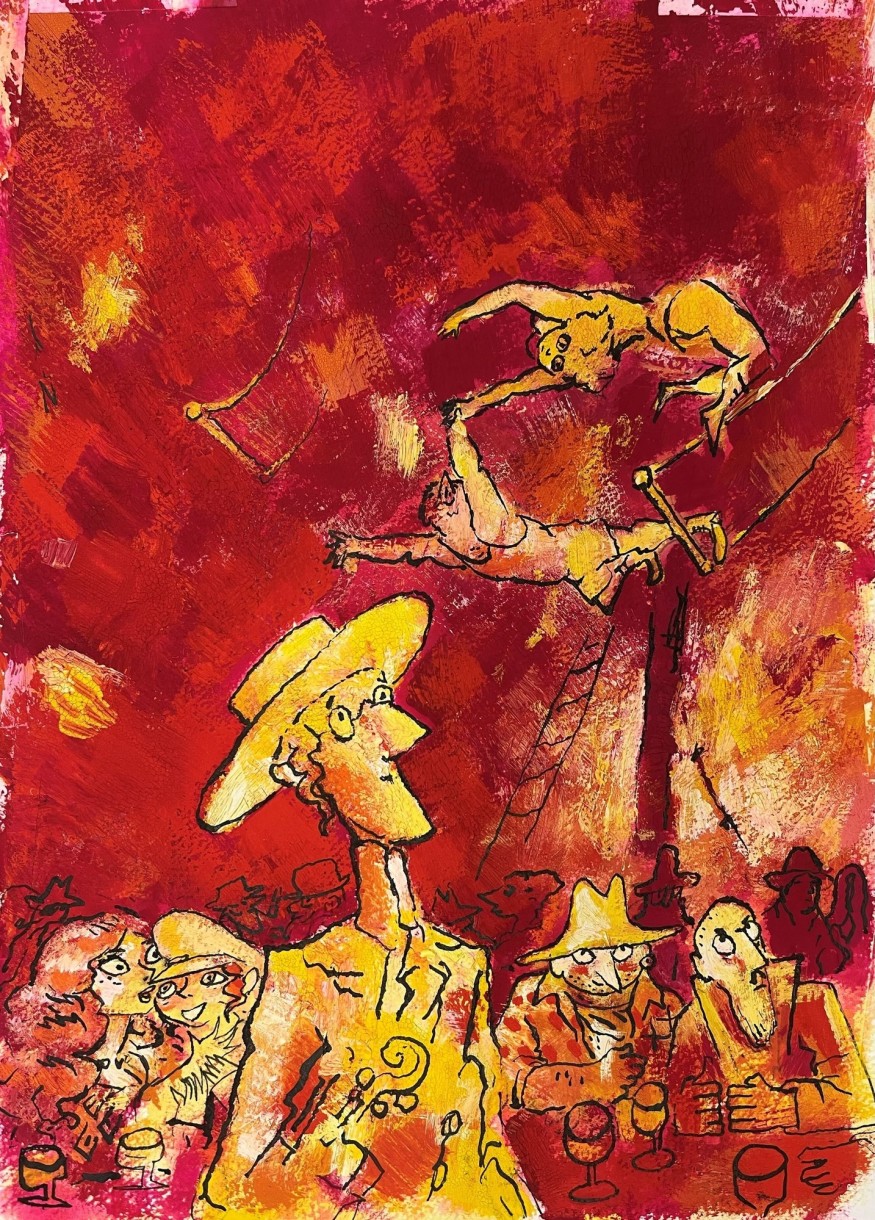
A second revelation came much later. The same year I wrote this text, in 2023, when the Musée d’art et d’histoire du judaïsme asked me to write a chapter on the image of North African Jews and Jewish-Muslim relations in Le Chat du rabbin for the catalog accompanying the Joann Sfar exhibition[48]. At first, I hesitated. My research centers have since shifted to Ashkenazi Jewishness and Poland… Nevertheless, I accepted, curious and amused by the idea of finally reading the entire series. Rereading the first volume, The Bar Mitzva, the same one that made me laugh so hard over twenty years ago, I quickly realized that I hadn’t been totally mistaken. Admittedly, the comic strip’s settings are undeniably North African, the rabbi’s daughter is called Zlabya and not Ryvke, and the characters definitely don’t speak Yiddish. But this first volume is universally Jewish and free-thinking. I even have fun imagining Eastern European settings for the same dialogues. And it works. While researching, I learned that Sfar himself had initially wanted to set his story in an Ashkenazi universe. He decided against it, however, as he was also working on Klezmer, a story set in Eastern Europe. “The young Yaacov [one of the characters in Klezmer] looks like the animal I drew in Le Chat du rabbin [Sfar writes]. They have the same way of looking at people and things. When I make them talk, it’s the same voice I hear. It’s as if the cat has become a human boy. And he uses it, his human prerogatives: he speaks, no longer hiding what’s in the back of his head”[49]. The author even admits: “Maybe it’s relevant to read Klezmer and Le Chat du rabbin together. Klezmer is the other side of the coin. The cat is for my dad’s family. My mother’s family is a snow desert”[50]. Snippets of this family memory were revealed in Le Chat du rabbin, when we met a secularized Russian Jew, a kind of revolutionary Chagall, in search of the Jerusalem of the Falashas, who married a non-Jewish African slave who converted to Judaism for him.
This discovery reassures me. Firstly, on a purely egotistical level, I feel less stupid for having “understood” the subject during this first Krakowian reading, even if many things escaped me. Many things, in fact, starting with the colonial universe and France’s role in shaping social relations. But above all, intellectually, I feel relieved by this universe of possibilities, which speaks to and makes laugh all those who share, in the slightest, some references to the Jewish world. A Jewish universe where, thanks to the cat’s caustic humor, religious references are kept at bay. I agree with Sfar when he says: “I think God loves these moments when we do without him. He says to himself, ‘At last, they’re going to stop wandering around with their noses in the air, looking for supernatural magic’; they’re going to look at the snow, the trees and start thinking. They’re doing the work without me, inventing utopias for themselves in which I’m not the essence, finding in themselves the reason for everything. Finally, without knowing it, they understand my law, because it’s the law of the world”[51].
This universe is a European Jewish world, diasporic and mixed, like all its societies, with their fractures and inequalities. Sfar often speaks of his attachment to the European future of Jews. It’s a possible world, for me and others, in which this rabbi’s cat, a consummate virtuoso of the pilpul, questions the immensity of the stupidity of the human race, which he refuses to despair over, preferring to point us in the right direction.
Ewa Tartakowsky
Ewa Tartakowsky was born in Krakow. She is a sociologist, CNRS research fellow and member of the Institut des sciences sociales du politique (UMR7220). Her work focuses on contemporary Jewishness, as well as on the transmission and public use of the past and memory. She has published ‘Les Juifs et le Maghreb. Fonctions sociales d’une littérature d’exil’ (PUFR, 2016) and edited with Marcelo Dimentstein, ‘Juifs d’Europe. Identités plurielles et mixité’ (PUFR, 2017) and ‘Jewish Europe Today. Between Memory and Everyday Life’ (Austeria, 2020).
Notes
| 1 | Ewa Tartakowsky, “Sephardic presences in Poland. Singular figures and the community of Zamosc”, Zeszyty Naukowe Uniwersytetu Jagiellońskiego. Prace Historyczne, n°143/1, 2016, p. 57-67. |
| 2 | See the book based on this research: Ewa Tartakowsky, Les Juifs et le Maghreb. Fonctions sociales d’une littérature d’exil, Tours, Presses universitaires François Rabelais, coll. “Migrations”, 2016. |
| 3 | Joann Sfar, Le Chat du rabbin, t. 2: Le Malka des Lions, Paris, Dargaud, coll. “Poisson pilote”, 2002, plate 22. |
| 4 | Le Chat du rabbin, t. 4 : Le Paradis terrestre, Paris, Dargaud, coll. « Poisson pilote », 2005, plates 24-25. |
| 5 | Le Chat du rabbin, t. 2 : Le Malka des Lions, op. cit., plate 3. |
| 6 | Charles-André Julien, Histoire de l’Algérie contemporaine. La conquête et les débuts de la colonisation (1827-1871), Paris, Presses universitaires de France, p. 13. |
| 7 | Le Chat du rabbin, t. 3 : L’Exode, Paris, Dargaud, coll. « Poisson pilote », 2003, plate 43. |
| 8 | Le Chat du rabbin, t. 1 : La Bar-Mitsva, Paris, Dargaud, coll. « Poisson pilote », 2002, plate 43. |
| 9 | Le Chat du rabbin, t. 9 : La Reine de Shabbat, Paris, Dargaud, coll. « Poisson pilote », 2019, plate 7. |
| 10 | Le Chat du rabbin, t. 5 : Jérusalem d’Afrique, Paris, Dargaud, coll. « Poisson pilote », 2006, plate 45. |
| 11 | Le Chat du rabbin, t. 7 : La Tour de Bab-El-Oued, Paris, Dargaud, coll. « Poisson pilote », 2017, plate 18. |
| 12 | Ibid., plate 30. |
| 13 | Report by Jacques-Isaac Altaras and Joseph Cohen (1842), published in full in Simon Schwarzfuchs (ed.), Les Juifs d’Algérie et la France (1830-1855), Jerusalem, Ben Zvi Institute, 1981, quote p. 67. |
| 14 | Le Chat du rabbin, t. 1 : La Bar-Mitsva, op. cit., plate 9. |
| 15 | Le Chat du rabbin, t. 3 : L’Exode, op. cit., plate 2. |
| 16 | Le Chat du rabbin, t. 1 : La Bar-Mitsva, op. cit., plate 25. |
| 17 | Valérie Assan, “Les rabbins de France et d’Algérie face à la “mission civilisatrice””, in Allouche-Benayoun, Joëlle and Geneviève Dermenjian (eds.), Les Juifs d’Algérie. Une histoire de ruptures, Aix-en-Provence, Presses universitaires de Provence, 2015, pp. 63-73. |
| 18 | Le Chat du rabbin, t. 2 : Le Malka des Lions, op. cit., plate 12. |
| 19 | V. Assan, « Les rabbins de France et d’Algérie… », op. Cit. |
| 20 | Le Chat du rabbin, t. 5 : Jérusalem d’Afrique, op. cit., plate 6. |
| 21 | Le Chat du rabbin, t. 2 : Le Malka des Lions, op. cit., plate 23. |
| 22 | Le Chat du rabbin, t. 3 : L’Exode, op. cit., plate 9. |
| 23 | Ibid., plate 11. |
| 24 | Le Chat du rabbin, t. 10 : Rentrez chez vous !, Paris, Dargaud, coll. « Poisson pilote », 2020, plate 14. |
| 25 | Le Chat du rabbin, t. 2 : Le Malka des Lions, op. cit., plate 2. |
| 26 | Pierre-Jean Le Foll Luciani, Les Juifs algériens dans la lutte anticoloniale. Trajectoires dissidentes (1934-1965), Rennes, Presses universitaires de Rennes, 2015, pp. 18-19. |
| 27 | Le Chat du rabbin, t. 10 : Rentrez chez vous !, op. cit., plate 11. |
| 28 | Benjamin Stora, Les trois exils, juifs d’Algérie, Paris, Stock, coll. « Un ordre d’idées » 2006, p. 13. |
| 29 | Le Chat du rabbin, t. 10 : Rentrez chez vous !, plate 71. |
| 30 | Ibid., plates 10-11. |
| 31 | Charles-Robert Ageron, « Une émeute anti-juive à Constantine (août 1934) », Revue de l’Occident musulman et de la Méditerranée, n° 13-14, 1973, p. 23-40. |
| 32 | Le Chat du rabbin, t. 2 : Le Malka des Lions, op. cit., plate 16. |
| 33 | Le Chat du rabbin, t. 2 : Le Malka des Lions, op. cit., plates 35-36. |
| 34 | Ibid., plate 39. |
| 35 | Ibid., plate 38. |
| 36 | Le Chat du rabbin, t. 10 : Rentrez chez vous !, op. cit., plate 74. |
| 37 | Frédéric Abécassis and Jean-François Faü, “Le Monde musulman : effacement des communautés juives et nouvelles diasporas depuis 1945”, in Antoine Germa, Benjamin Lellouch and Éévelyne Patlagean (dir.), Les Juifs dans l’histoire. De la naissance du judaïsme au monde contemporain, Paris, Champ Vallon, 2011, p. 552. |
| 38 | Le Chat du rabbin, t. 4 : Le Paradis terrestre, op. cit., plate 36. |
| 39 | Le Chat du rabbin, t. 7 : La Tour de Bab-El-Oued, op. cit., p. 41. |
| 40 | Ibid., plate 22. |
| 41 | Le Chat du rabbin, t. 3 : L’Exode, op. cit., plate 26. |
| 42 | Ibid., plate 32. |
| 43 | Ibid., plate 35. |
| 44 | Le Chat du rabbin, t. 10 : Rentrez chez vous !, op. cit., plate 82. |
| 45 | E. Tartakowsky, Les Juifs et le Maghreb…, op. cit., p. 230-236. |
| 46 | Le Chat du rabbin, t. 3 : L’Exode, op. cit., plate 5. |
| 47 | Ibid., plate 31. |
| 48 | Ewa Tartakowsky, « Sarcasmes philosophiques d’un chat de rabbin sur l’Algérie, les juifs, les dieux et… l’amour », in Clémentine Deroudille and Thomas Ragon (dir.), Joann Sfar. La vie dessinée, Paris, Dargaud et mahJ, 2023, p. 122-123. |
| 49 | Joann Sfar, Klezmer, I. Conquête de l’Est, Paris, Gallimard, 2005, p. VI. |
| 50 | Ibid., p. VII. |
| 51 | Ibid., p. VI. |
